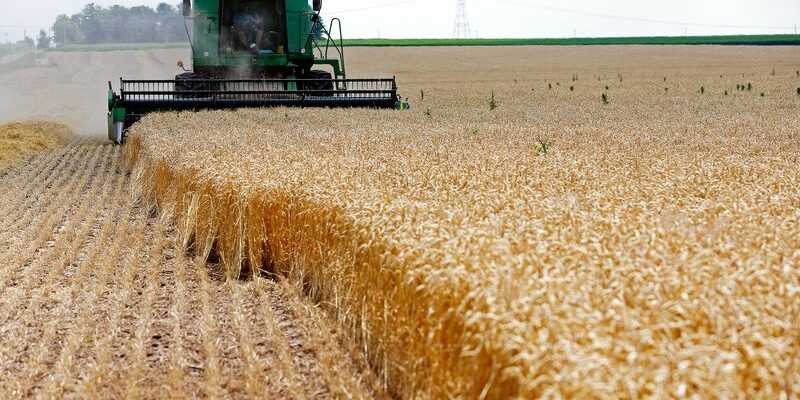The U.S. Department of Agriculture on Thursday pegged global wheat ending stocks for the 2022-23 crop year at 267 million tonnes, the lowest level in six years, well below analysts’ estimates that 272 million.
But relative to estimated global demand, wheat stocks for the next cycle are seen dangerously close to historic lows and significantly below this year’s reduced levels.
Excluding China, the global wheat stocks-to-use ratio for 2022-23 falls to 14.9%, from 16.4% this year, and that would be the fourth lowest on record. The record of 14.3% was set in 2007-2008, and the average for the middle of the last decade was 19%.
This could keep wheat prices high until 2023, impacting food prices for consumers around the world and keeping costs high for importing countries. Further risks to wheat supplies in 2022-23 are possible.
Chicago’s most active wheat futures hit a two-month high of $11.83 a bushel on Thursday. Futures as of mid-May had traded in the lower $8 range in 2008 and 2011, the month high before 2022.
Euronext bl, ngoci Paris, reached contract highs on Thursday, September reaching 416.25 euros per tonne.
USDA’s Thursday estimates were its first for the 2022-23 cycle.
Chart – Global wheat stocks usage minus China:
CLOSE PERSPECTIVES
One of the most surprising forecasts on Thursday was US hard red winter wheat production from the USDA Statistics Service at 590 million bushels. Analysts expected 685 million, already far from 749 million last year. It would be the smallest HRW crop from the United States since 1963.
The condition ratings of US HRW states are dire, among the worst on record, although history indicates the USDA’s prediction may be reasonable. Over the past decade, the USDA’s May forecast for HRW has averaged much closer to final in low-yielding years than in high-yielding years.
But the spring wheat harvest in the United States is of great concern and could limit the country’s production. Sunday, the pace of sowing was the slowest since 2011 and North Dakota, the largest producer, had sown only 8% of the crop against 37% on average. Further rains this week may have compounded the delays.
The situation in Ukraine also brings great uncertainty to the wheat market, as the Russian army still occupies parts of the country, which is normally one of the top five exporters. The USDA pegged Ukraine’s 2022-23 wheat harvest, which was planted last fall, at 21.5 million tonnes, the lowest level in 10 years and a 35% drop on the anna.
Ukraine’s wheat exports were valued at just 10 million tonnes, down 47% on the year and the lowest level in nine years.
The harvest of Russia, the leading wheat exporter, is expected to increase by more than 6% over the year, but the USDA forecasts lower 2022-23 harvests from the main suppliers of Argentina, Australia, India and the European Union, by 4% in total. Adverse weather conditions in France and India could put pressure on volumes there.
Canada’s wheat crop is expected to rebound by 50% from last year’s drought disaster, although the pace of plantings and dry conditions are the focus of analysts’ attention. The USDA reports that the total US crop is up 5% for the year, but this increase is entirely due to tentative spring wheat assumptions.
China, which is often left out of global grain analyzes due to its stockpiling habit, is expected to have a record 53% of global wheat in stock by mid-2023.
Karen Braun is a market analyst for Reuters. The opinions expressed above are his own.
